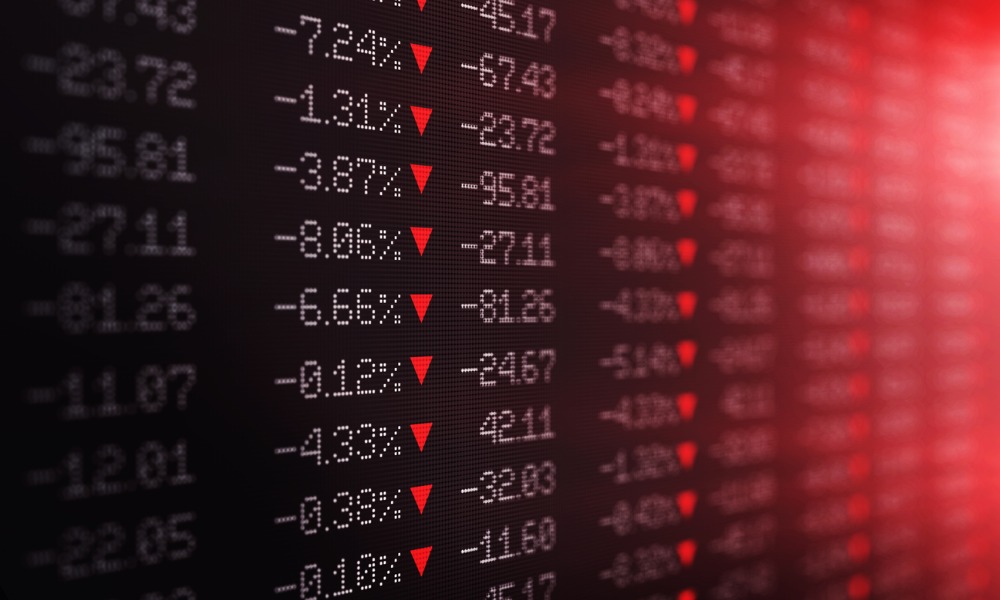With talk of a recession looming in the stock market, this is a good time to review a fundamental consideration of portfolio construction, namely downside protection

With talk of a recession looming in the stock market, this is a good time to review a fundamental consideration of portfolio construction, namely downside protection. Downside protection strategies can range from purchasing options (or other vehicles) to hedge against losses, to the virtual elimination of downside risk with GICs. Many of these strategies have costs, or in the case of GICs, opportunity costs as potential gains are forfeited in the pursuit of safety. A much more cost effective method though is to construct a conventional investment portfolio with built-in downside protection characteristics.
A primary driver of long term equity returns are dividends. A few years ago Morgan Stanley Capital International (MSCI) posted a blog entitled What Matters for Investors In The Long Run in which they examined the contribution of dividends to the total return of an equity portfolio over a 20 year period from December 1994 to September 2015. Using data from the MSCI ACWI Index (which captures all sources of equity returns in 23 developed and 26 emerging markets) MSCI decomposed the historical performance of the index into three components; dividend yield, dividend growth and the changes in equity valuation. The researchers then looked at these components over different holding periods. The conclusion for returns over the short term, say a year or so, confirmed that the change in valuation was much more important than the dividends earned, as the valuation changes contributed to more than half of the returns on average. However, over the 20 year period tested, the dividend yield and dividend growth components contributed 93% of the return, leaving about 7% of the performance attributed to changes in valuation. Investors who have a time horizon measured in decades may want to focus on understanding the exposure of their portfolios to long-term economic growth and drivers of growth at the sector and company level rather than looking primarily at changes in valuation.
Beating the index during bear markets is more important than during bull markets for two reasons. The first is mathematical. Big losses require even bigger gains to recover. If you lag during a bear market you have to beat the benchmark by a lot during bull markets to come out ahead over the long term. To illustrate, the Hulbert Financial Digest monitors several hundred investment newsletters and compares their performance to the S&P 500 benchmark. Of the newsletters tested, the one that lost the most during the bear market from October 2007 to March 2009 saw a drop of 79%. That investment newsletter’s recommendations would have had to gain more than 1,000% since March 2009 in order to merely equal the S&P 500’s return over the entire period since October 2007. To put that in context, the S&P 500’s return since March 2009 has been “just” 380%. This portfolio would have had to beat the subsequent bull market by nearly three to one just to equal the S&P 500’s return over the entire bull-and-bear cycle, an almost impossibly high hurdle.
A second important consideration for limiting bear market losses is behavioral. Many investors cite a long term time horizon and then proceed to focus on near term analysis and headlines. Some investors get caught up in the allure of investing and become stock jockeys, focused on the upside potential of stocks, while rarely considering the factors involved in preparing portfolios for a recession. There is a psychological explanation for the phenomenon which is the desire for excitement. Not losing as much as the index during a bear market is not as exhilarating as making more money than the index in a rising market. In a rising market some investors tend to over-allocate to equities. In the U.S., the Investment Company Institute (ICI), a global association of regulated funds, conducted a review of Investment Retirement Accounts (IRAs) to ascertain the percentage allocated to equities over an investment cycle. As of the end of 2016, those investors aged 70 and up were allocating an average of 61.5% of their IRAs to equities. The comparable IRA equity allocation at the top of the market in 2007 was almost as high as it is now. By December 2008, two months before the bear market ended, that allocation had dropped to 46.6%.
It’s the rare investor who can tolerate big bear market losses. All too often investors end up throwing in the towel during the latter stages of a bear market and so miss out when the market recovers. A 10% correction is tolerable for most people. At 20% people get a little nervous but when you get losses in the 30% to 40% range, the number of people cashing out becomes a flood. As a reminder, the average stock lost 49% in the 2000-2002 bear market and fell 55% in the 2007-2009 bear market in the U.S., even with dividends.
The investment implication is that financial advisors and investors alike should focus more of their energy on how to limit bear market losses than on how to beat the index during a bull market. With some stock markets at or near all-time highs, this may well be the perfect time to consider the downside characteristics of your portfolio. Otherwise it may be too late if you wait until we are in a market downturn.

.jpg)


